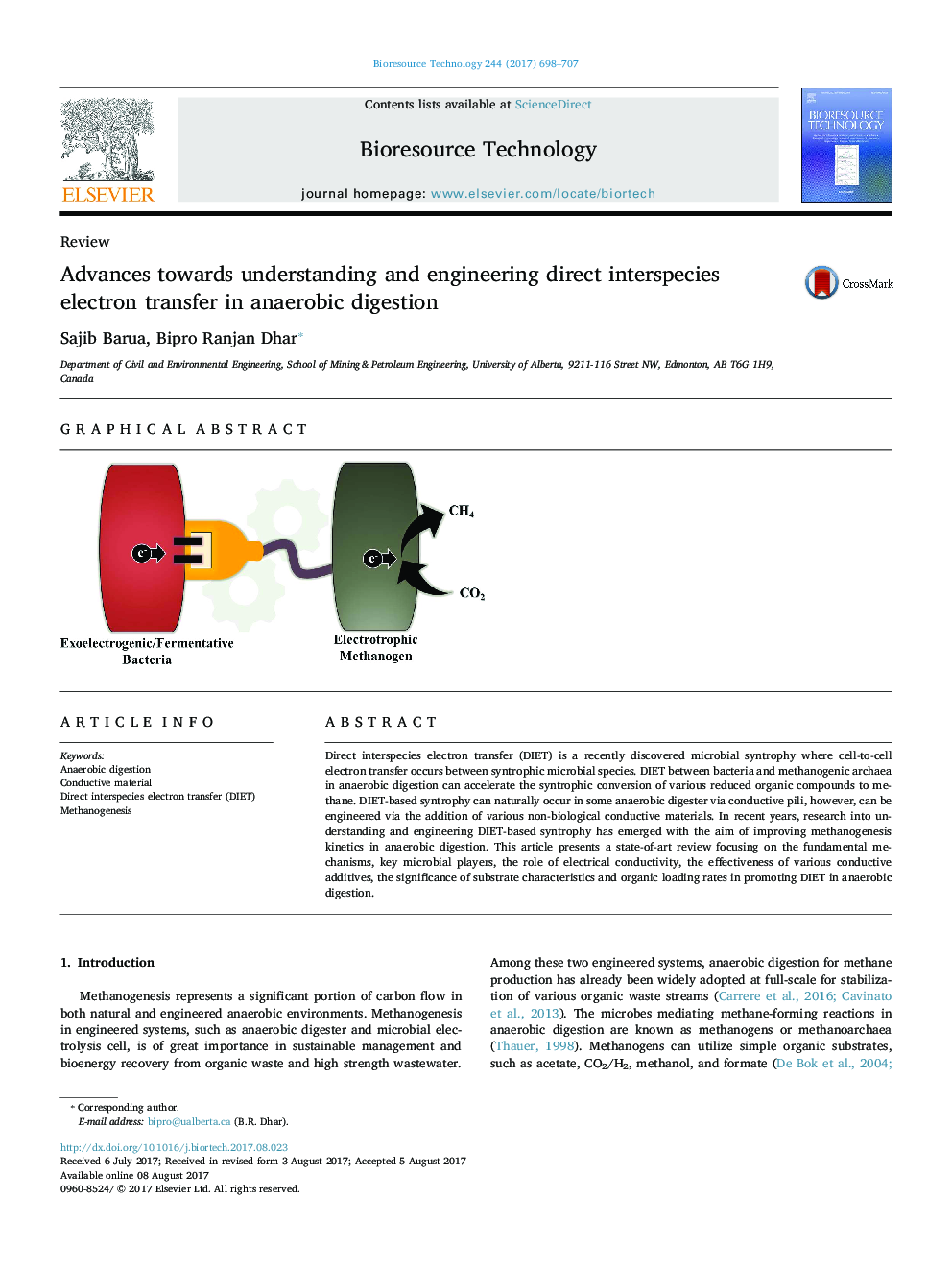| Article ID | Journal | Published Year | Pages | File Type |
|---|---|---|---|---|
| 4996544 | Bioresource Technology | 2017 | 10 Pages |
â¢Fundamental and engineering aspects of DIET in anaerobic digestion were reviewed.â¢Performances of various conductive materials in engineering DIET were summarized.â¢Research gaps were identified to develop future research interests.
Direct interspecies electron transfer (DIET) is a recently discovered microbial syntrophy where cell-to-cell electron transfer occurs between syntrophic microbial species. DIET between bacteria and methanogenic archaea in anaerobic digestion can accelerate the syntrophic conversion of various reduced organic compounds to methane. DIET-based syntrophy can naturally occur in some anaerobic digester via conductive pili, however, can be engineered via the addition of various non-biological conductive materials. In recent years, research into understanding and engineering DIET-based syntrophy has emerged with the aim of improving methanogenesis kinetics in anaerobic digestion. This article presents a state-of-art review focusing on the fundamental mechanisms, key microbial players, the role of electrical conductivity, the effectiveness of various conductive additives, the significance of substrate characteristics and organic loading rates in promoting DIET in anaerobic digestion.
Graphical abstractDownload high-res image (51KB)Download full-size image
